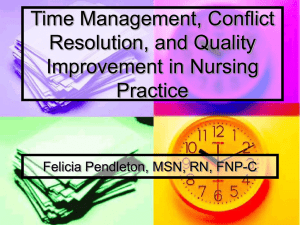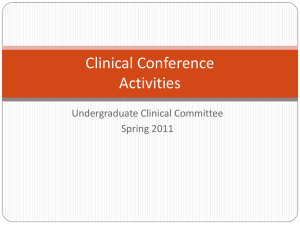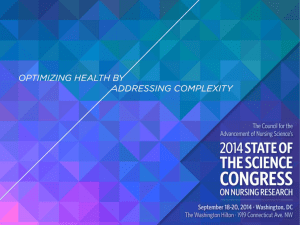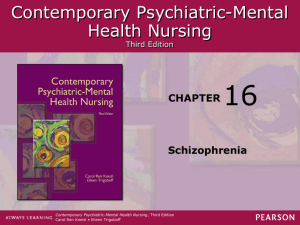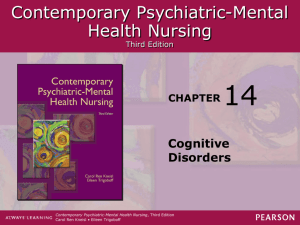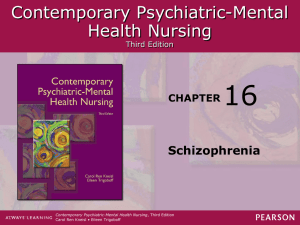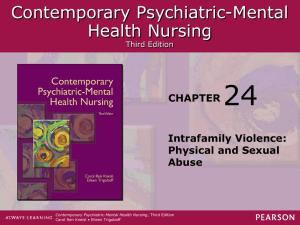Psychopharmacology Lesson - Professional Portfolio Erin K. Kibbey
advertisement
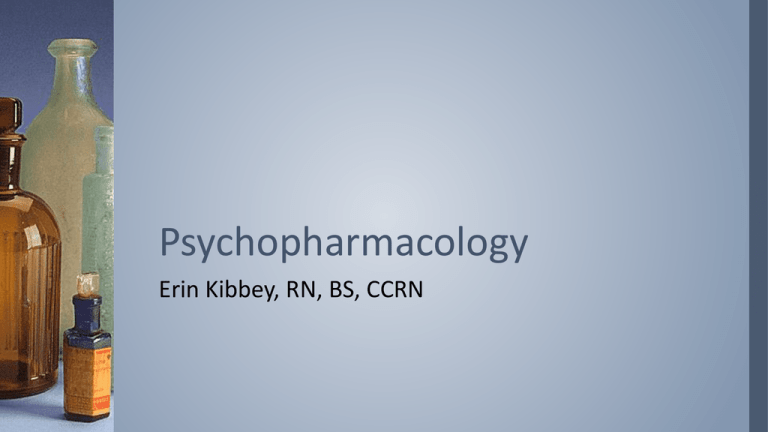
Psychopharmacology Erin Kibbey, RN, BS, CCRN Learning Objectives › From a historical perspective, reflect on how psychopharmacology has changed mental health nursing › Explore why patients may refuse or not follow treatment plants (e.g., non-adherence) › Illustrate the neurobiological mechanism for various psychotropic medications › Construct a teaching plan to help patients manage their medications and increase adherence › Explain the primary clinical indications, major side effects, and significant nursing implications for each of the drug categories Student Assignments › Read Ch. 7 & 31 from textbook › Watch YouTube video on movement disorders associated with psychopharmacology › Review drug handout Historical Perspectives › Before 1950s – Sedatives and amphetamines were the only significant psychotropic drugs available › Since 1950s, psychopharmacology has expanded to include antipsychotic, antidepressant, and antianxiety drugs › Psychotropic drugs are intended to be used as an adjunct to individual or group psychotherapy Townsend, 2006; Trigoboff, 2013b How Psychopharmacological Agents Work › Neurotransmitters – Chemicals stored in axon terminals of presynaptic neuron › Receptors – Molecules situated on cell membrane that are binding sites for neurotransmitters › Reuptake – Process of neurotransmitter inactivation by which the neurotransmitter is reabsorbed into the presynaptic neuron from which it had been released Townsend, 2006 Nursing Implications › Ongoing assessment – – – – side effects/client response drug interactions psychosocial implications educational activities › Advocate to reduce stigma › Holistic function – Goal is to promote clients physiologic stability so they can achieve psychological, social, and spiritual growth Trigoboff 2013a, 2013b Why treatment of mental illness can be challenging › Nonadherence – YouTube video › Debilitating side effects › High Costs › Toxicity › Stigmas › Polypharmacy › Right to refuse Bonnivier & Magoteaux, 2012; Townsend, 2006; Trigoboff 2013a, 2013b Medication Teaching Checklist › Keeping all medications and information about them together in one dry, cool, place › When to report side effects › How to report side effects › Strategies and tools for managing side effects › Strategies and tools for managing residual symptoms › The effect of mental illness and psychiatric medications on life goals › Reinforce learning by providing an opportunity at some point for the client to teach others about medications Townsend, 2006; Trigoboff, 2013a, 2013b Major Drug Categories › Antipsychotics – Drugs to treat side effects of antipsychotics › Antidepressants: Tricyclics, MAOIs, SSRIs, SNRIs, › Anxiolytics: Benzodiazepines & Nonbenzodiazepines › Mood-stabilizing agents: Lithium, Anticonvulsant agents & atypical agents › Drugs to treat ADD/ADHD › Drugs to treat DAT: Atypical antipsychotics, acetylcholinesterase inhibitors, Glutamate pathway modifier Bonnivier & Magoteaux, 2012; Townsend, 2006; Trigoboff 2013a, 2013b Review › Antianxiety medications produce a calming effect by: – – – – A. Depressing the CNS B. Decreasing levels of norepinephrine and serotonin in the brain C. Decreasing levels of dopamine in the brain D. Inhibiting production of the enzyme MAO Answer › Antianxiety medications produce a calming effect by: – A. Depressing the CNS – B. Decreasing levels of norepinephrine and serotonin in the brain – C. Decreasing levels of dopamine in the brain – D. Inhibiting production of the enzyme MAO Review › Antipsychotic medications are thought to decrease psychotic symptoms by: – – – – A. Blocking reuptake of norepinephrine and serotonin B. Blocking the action of dopamine in the brain C. Inhibiting production of the enzyme MAO D. Depressing the CNS Answer › Antipsychotic medications are thought to decrease psychotic symptoms by: – A. Blocking reuptake of norepinephrine and serotonin – B. Blocking the action of dopamine in the brain – C. Inhibiting production of the enzyme MAO – D. Depressing the CNS Potential Adverse Side Effects of Drugs › Anticholinergic delirium › Agranulocytosis › Neuroleptic malignant syndrome › Extrapyramidal symptoms/EPSEs – Tardive dyskinesia, drug induced Parkinsonism, akathesia, akinesia, bradykinesia › Serotonin syndrome (p. 688) › Cardiac effects/Hypertensive crisis/Orthostatic hypotension Trigoboff, 2013a Review Question › Part of the nurse’s continual assessment of the client taking antipsychotic medications is to observe for extrapyramidal symptoms. Examples include: – A. Muscular weakness, rigidity, tremors, facial spasms – B. Dry mouth, blurred vision, urinary retention, orthostatic hypotension – C. Amenorrhea, gynecomastia, retrograde ejaculation – D. Elevated blood pressure, severe occipital headache, stiff neck Answer › Part of the nurse’s continual assessment of the client taking antipsychotic medications is to observe for extrapyramidal symptoms. Examples include: – A. Muscular weakness, rigidity, tremors, facial spasms – B. Dry mouth, blurred vision, urinary retention, orthostatic hypotension – C. Amenorrhea, gynecomastia, retrograde ejaculation – D. Elevated blood pressure, severe occipital headache, stiff neck Alternative Medicine Approaches › Herbals, minerals, vitamins, & complementary treatment – Herbs and plants usually take longer to work and few have the potency of a prescription › Benefits › Potential problems Trigoboff, 2013b Online Resources › http://www.fda.gov/Drugs/DrugSafety/PostmarketDrugSafetyI nformationforPatientsandProviders/ucm111085.htm#top › http://www.healthline.com/ › http://www.mentalhelp.net/ › http://www.nami.org/ › http://www.bipolarbrain.com/meds.html › http://www.psychnet-uk.com/ References › Bonnivier, J. F., & Magoteaux, A. L. (2012). Innovative teaching strategy for pharmacology in psychiatric-mental health nursing: Moving from content to concepts. Journal of Psychosocial Nursing & Mental Health Services, 50(12), 22-29. doi: http://0dx.doi.org.libcat.ferris.edu/10.3928/02793695-20121107-03 › Townsend, M. (2006). Psychiatric mental health nursing (5th ed.). Philadelphia, PA: F. A. Davis › Trigoboff, E. (2013a). Psychopharmacologic nursing interventions. In C. R. Kneisl & E. Trigoboff (Eds.), Contemporary psychiatric-mental health nursing (3rd ed.). (pp. 672-696). Upper Saddle River, NJ: Prentice Hall › Trigoboff, E. (2013b). The science of psychopharmacology. In C. R. Kneisl & E. Trigoboff (Eds.), Contemporary psychiatric-mental health nursing (3rd ed.). (pp. 113-138). Upper Saddle River, NJ: Prentice Hall





